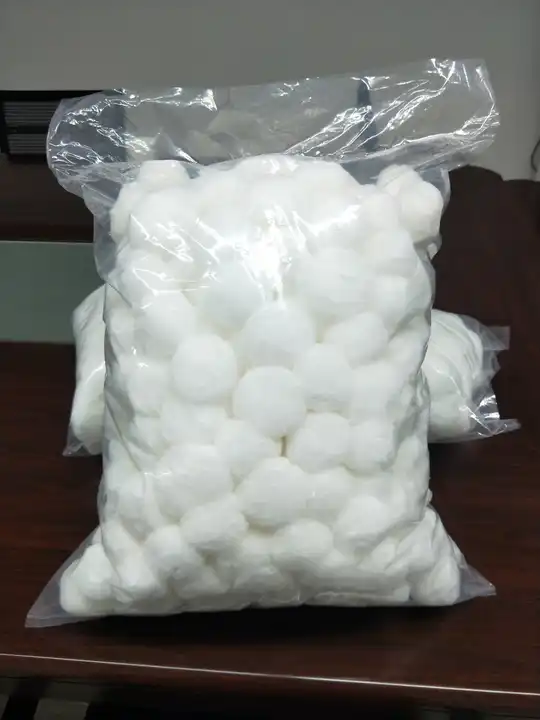In current water treatment processes, fiber ball filtration is receiving significant attention due to its unique filter material characteristics and wide range of applications. Its unique materials and structure enable it to effectively treat pollutants in water bodies. So, how does this fiber ball work? From physical blocking, adsorption, and deep filtration to biodegradability, this article systematically studies the filtration mechanism of fiber micro-balls, elucidating their efficient water purification mechanisms.

Physical Barrier: During the filtration process, water passes through a net filled with fiber balls, which form a complex network due to their close proximity to each other. This network has ample space to effectively block and intercept large particulate matter in the water, such as suspended solids, dirt, and microbes. As water passes through this net, larger particles are physically trapped, preventing them from flowing into the next area.
Adsorption: Due to its large specific surface area, it can effectively adsorb fine particulate matter and dissolved organic substances in the water. The material of the fiber balls (such as surface roughness, chemical composition, etc.) can absorb oil and other organic substances in water, using physical and chemical adsorption methods to further remove tiny impurities.
Deep Filtration: Due to its complex internal structure, water undergoes multiple changes in direction and deceleration when passing through the filter material. This increases the contact time between the water and filter material, enlarging the surface area of the filter material, enabling even the finest particles to be efficiently captured and filtered. Such deep filtration is very useful for removing fine suspended micro-particles and bacteria.
Biodegradability: In some applications, such as wastewater treatment, it can also support microorganisms. These microorganisms adhere to the surface of the fiber balls, using their metabolism to degrade organic substances in the water, achieving biodegradation of organic substances in the water.
Due to its unique microstructure, it ensures better filtration results, thus guaranteeing the cleanliness and safety of water. From physical barriers to biodegradability, each process reflects its efficient filtration characteristics. This special performance makes it highly suitable for different water quality issues in industrial, domestic, and wastewater. Therefore, based on in-depth research, we can use it more effectively to contribute to building a cleaner and healthier water environment.
